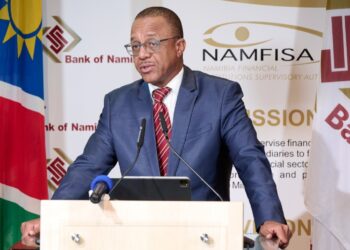
The Road Fund Administration (RFA) has warned that the condition of the road network and the growing funding gap are expected to drive vehicle maintenance costs for Namibians to a staggering N$42 billion by 2028.Â
According to RFA’s Executive for Programme Management and Policy Advice Namene Kalili, from a mere N$2 billion in 2000, these costs have surged to N$19 billion in 2022, a trend that Kalili described as “unsustainable.”
“Clearly this is unsustainable and therefore RUCs (road user charges) need to be ramped up to maintain the road network to its original design specification,” he said.Â
The RFA’s concerns are supported by an alarming revelation from the RFA’s deterioration model.Â
Kalili noted that for every N$1.00 not allocated to maintenance, road users are forced to spend an additional N$2.90 on vehicle operating costs.Â
“This ultimately results in a net loss to society amounting to N$1.90. The deteriorating road condition and high transport costs are largely attributed to suboptimal maintenance practices,” he explained.
Therefore, the RFA argues that it is in the best interest of the public to increase road user charges, ensuring that they cover the full spectrum of maintenance needs and, in turn, reduce vehicle operating costs.
However, it’s important to note that the situation has been exacerbated by persistent underfunding over the years. Shockingly, no comprehensive road condition assessment has been conducted since 2019.
Recognising the importance of evidence-based maintenance planning, the RFA has prioritised funding for a new road condition assessment in its previous business plan.Â
The RFA is actively collecting necessary data throughout the country, and the results of this assessment are expected by the end of the current financial year, with plans to incorporate them into subsequent Business Plans.Â
Meanwhile, RFA board Chairperson Emma Haiyambo expressed her concerns during her keynote address at the 2023 Annual Business Plan Stakeholders’ Consultative Workshop.Â
She highlighted the importance of addressing the escalating funding gap, which has reached N$3.6 billion.Â
“This level of underfunding will erode road asset value and raise vehicle operating costs. So, I’m hoping to learn how (RFA) management plans to address these funding challenges over the next five years,” Haiyambo pointed out.Â
The RFA notes that the forthcoming road condition assessment results and strategies outlined in the Business Plans will play a pivotal role in addressing these challenges and paving the way for a more sustainable road infrastructure in Namibia.











